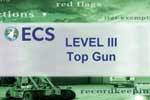Key Findings
The Latin America vetronics market is projected to register a CAGR of 2.26% during the forecast period, 2022-2030. Several procurement projects are in the pipeline in the region with regard to main battle tanks, artillery, and armored vehicles. Accordingly, the approval of the pending projects in the next few years is set to promote market growth in Latin America.
Market Insights
Venezuela, Brazil, Argentina, Mexico, and Rest of Latin America are evaluated for the Latin America vetronics market growth assessment. In Argentina, platforms like Panhard AML, VCTP, AMX-VCI, and M113 are evaluated as appropriate for the country’s security operations against international terrorist groups, criminal trafficking organizations, and drug cartels. These are also assessed to aid the security of the country’s troops during UN missions. Additionally, the acquisition of additional armored vehicles is projected to enhance Argentina’s defense and automotive sectors along with minimizing its reliance on imports. Besides, such aspects are expected to strengthen its economy eventually.
In countries Colombia, the growing domestic economy, the risks posed by rebel groups, and the threat posed by Venezuela drive the military expenditure. Also, the Defense Ministry is set to purchase fighters, main battle tanks, transport & utility aircraft, multi-role aircraft, armored personnel carriers, and infantry combat vehicles equipped with the latest and advanced electronic systems.
Competitive Insights
Some of the prominent companies in the Latin America vetronics market include Lockheed Martin, SAAB AB, Raytheon Technologies, Rheinmetall AG, etc.
Our report offerings include:
- Explore key findings of the overall market
- Strategic breakdown of market dynamics (Drivers, Restraints, Opportunities, Challenges)
- Market forecasts for a minimum of 9 years, along with 3 years of historical data for all segments, sub-segments, and regions
- Market Segmentation caters to a thorough assessment of key segments with their market estimations
- Geographical Analysis: Assessments of the mentioned regions and country-level segments with their market share
- Key analytics: Porter’s Five Forces Analysis, Vendor Landscape, Opportunity Matrix, Key Buying Criteria, etc.
- Competitive landscape is the theoretical explanation of the key companies based on factors, market share, etc.
- Company profiling: A detailed company overview, product/services offered, SCOT analysis, and recent strategic developments




